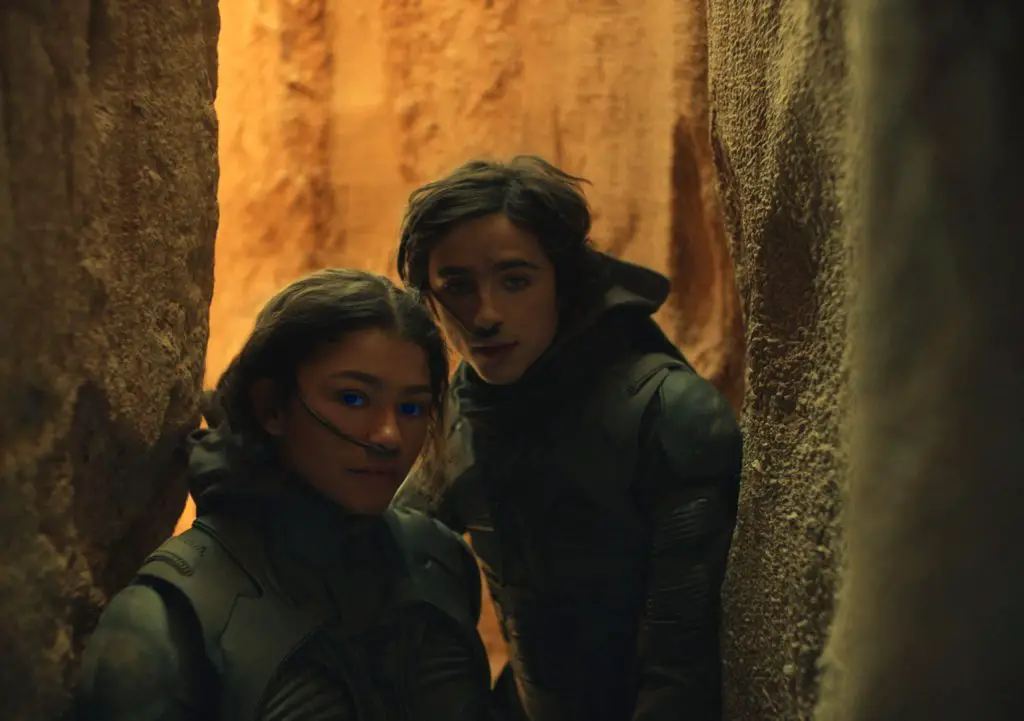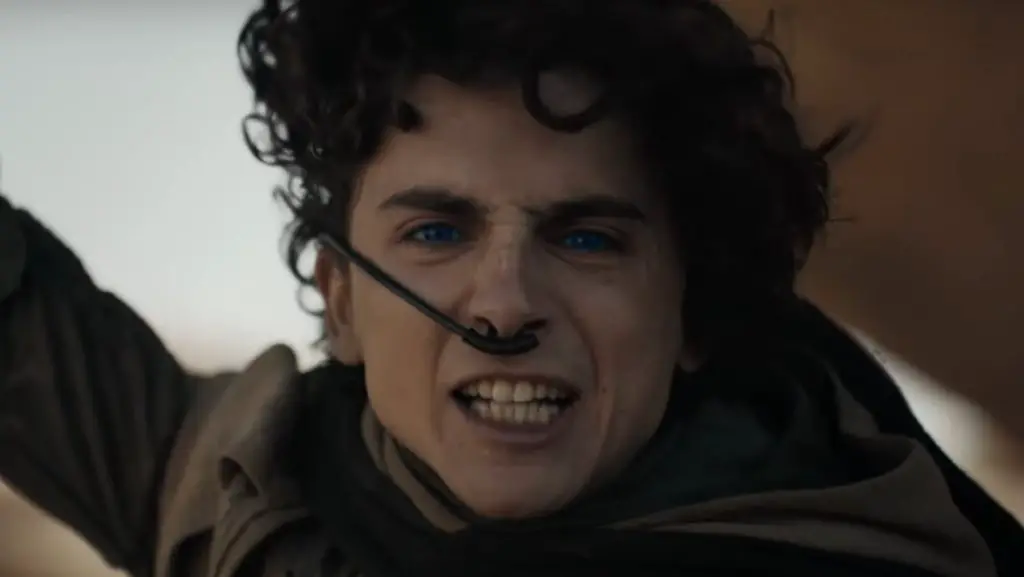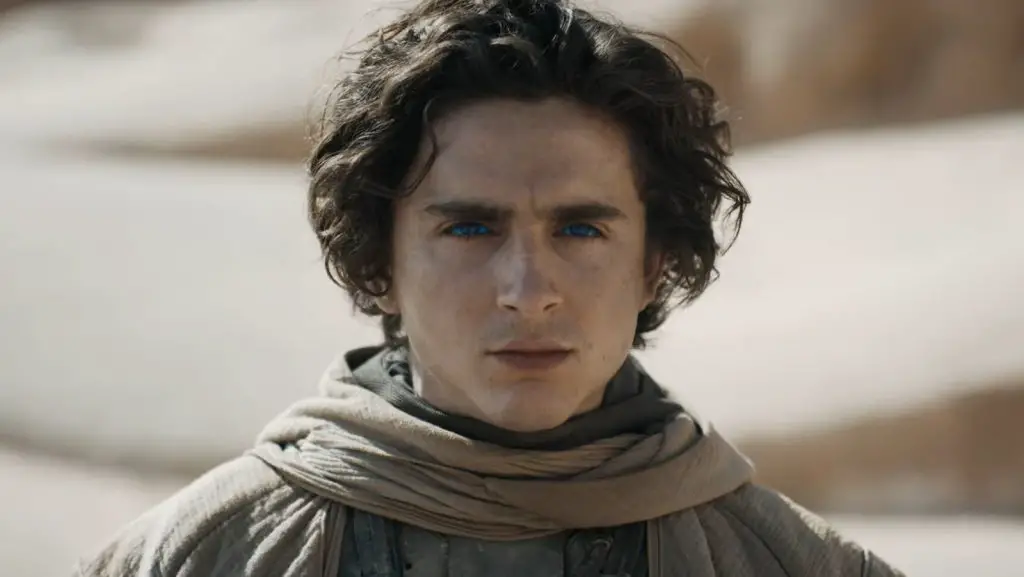After successfully clinching the Academy Award for Best Cinematography, acclaimed cinematographer Greig Fraser will be grappling with the monumental task of surpassing his predecessor in the impending “Dune: Part Two“. The stellar cinematography of “Dune” drew deeply from the rich tapestry of traditional science fiction aesthetics, striking a delicate balance of creating an imposing and awe-inspiring atmosphere without overly depending on CGI – a recurrent criticism aimed at contemporary films.
The extensive shots and a massive cast instilled in viewers the sensation of insignificance within the boundless expanse of the cosmos. The cinematography’s breadth mirrored the film’s scope, adding another layer of depth to the narrative. As possibly the grandest space saga ever to grace the silver screen, it’s worth noting that the first “Dune” film sets the stage for a series that promises to scale greater heights with each sequel.
“Dune” contended with several hurdles during its inception, the most notable being its infamous legacy as a doomed film. Various attempts to recreate this movie failed spectacularly in the past. While a version managed to cultivate a small, faithful fanbase, none could elevate the story into the mainstream consciousness. This version of “Dune” was the first to gain widespread public acceptance, with much credit going to its advanced CGI and massive budget. Its commitment to a distinctive style etched “Dune’s” photography into the annals of iconic science fiction cinematography. As we look forward, there are expectations for the return and enhancement of this aesthetic in the sequel.
An Exploration of Sci-Fi Cinematography

Typically associated with grandiose structures, flashy lights, extensive exterior shots, and ubiquitous nods to Kubrick’s 2001: A Space Odyssey, science fiction explores the realm of the unknown. As a genre, science fiction tantalizes audiences with the possibility that the extraordinary worlds on display could indeed exist.
The genre distinguishes itself from other film styles by the unique sense of awe it evokes. This is not about bedtime tales of dragons coming alive. Instead, it resembles the wonder of witnessing the maiden voyage of a rocket to the moon or a plane defying gravity. Science fiction capitalizes on dreams of futuristic inventions and innovations that might one day become realities.
Cinematography in more conventional films, like romantic comedies or early Adam Sandler productions, tends to be relatively straightforward. Shots are designed to be simple and direct, communicating the narrative at face value. In these movies, the role of cinematography is often to immerse the audience in the moment, forgetting they are witnessing a scripted scene.
In contrast, more artistic films, such as Mulholland Drive or French New Wave classics, use visuals to convey more than what meets the eye. Frame size, aspect ratio, and camera angles all become tools for subtle storytelling. For instance, the Dutch angle, or canted angle, which tilts the frame, often appears in horror films to suggest imbalance or impending danger, as seen in the conversation between Edward and Bella in “Twilight” about maintaining their friendship.
However, the average moviegoer might not discern the differences between a Gaussian or a box blur or spot a Fibonacci spiral in a scene. Even film students may struggle to recall specific terminologies. That said, it doesn’t mean that an average viewer should refrain from learning about cinematography; rather, it underscores that appreciating distinctive cinematography isn’t restricted to decoding complex film language.
Science fiction films masterfully bridge this gap between simplistic films and complex artistic ones. They provide the audience with a rich visual experience, while remaining accessible to average viewers who don’t wish to decipher film jargon.
Anticipating “Dune: Part Two”

“Dune” served as a remarkable revival of the traditional science fiction aesthetic, reminiscent of some elements in Marvel films yet offering something we haven’t experienced in a while. In contrast to Marvel’s propensity for using wide shots, “Dune” favored extreme wide shots, where characters appeared diminutive against the backdrop of colossal spaceships, gargantuan sandworms, or throngs of followers.
The focus shifts from the spectacle of Avengers battling aliens to Paul’s life, turbulent amidst the world around him. The extreme wide shots emphasize the environment over the characters, insinuating that the landscape itself is an integral character. It augments the narrative’s scale, indicating the immense forces at play and Paul Atreides’ relative insignificance.
“Dune” also employed an array of vibrant hues—blues, grays, browns, and yellows—immersing different scenes in diverse tonalities. This effectively distinguished various narrative threads in the multi-storyline film. With “Dune: Part Two” projected to be of a grander scale, even Greig Fraser, the Director of Photography, was left awe-struck.
Post his Oscar win, Fraser confided to The Hollywood Reporter backstage,
“I can’t give you any scoops…. .but Part Two is a bigger story. I read the script, and I was more blown away than Part One.”
We can predict a more epic narrative as the stakes rise for the Atreides family. However, what does it imply for Fraser, the man behind the lens? He is likely to reflect this escalating drama in his signature style. We could potentially see a significant shift in color palette if the film’s tone alters, as sequels often do. Depending on the characters’ trajectories, shots may become tighter and faster to amplify the tension. Will the frame close in on Paul as his foes close in on him? Or will Paul shrink further in the grand narrative scheme? What will truly count is the mood that the filmmakers aim to evoke.
Although most epic trilogies tend to make their second installment darker and intense, there are whispers about “Dune” being a potential quartet. Hence, fans eagerly anticipate the creative choices accompanying the next chapter of the saga.


